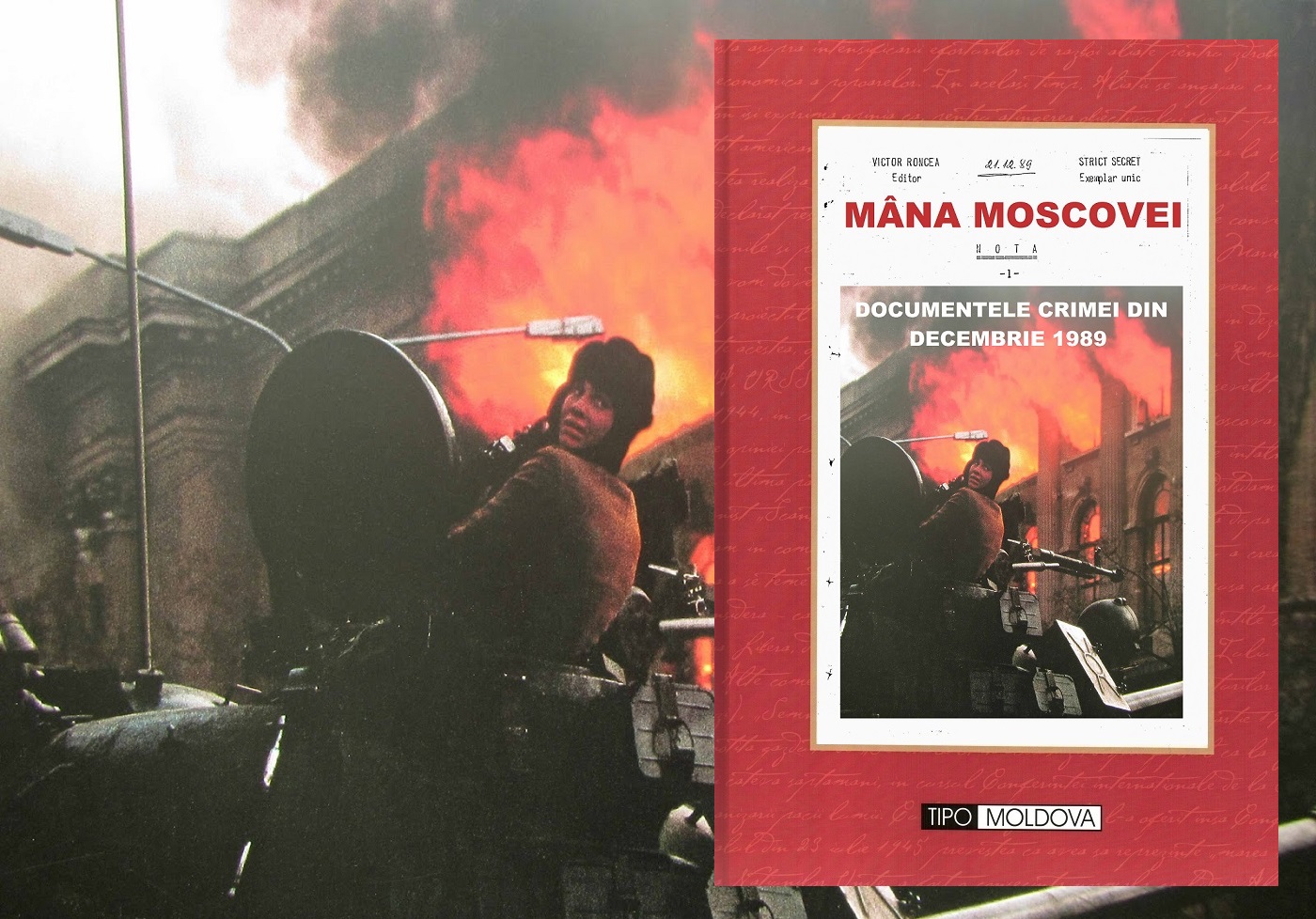 The Statue in the Capital Building
The Statue in the Capital Building
Part I
One Hundred and Sixty Five Years Ago, Hungarian leader Lajos Kossuth led a revolution that drew the admiration of the Western world. Under the slogans of liberty and equality, Kossuth sought a democratic republic for the Hungarian-administered sections of the Hapsburg Empire, run from Vienna, and the Hungarian struggle was the front-page topic of the international press, including, notably, the journal run by Karl Marx and Friedrich Engels.
Few countries were so taken with Kossuth and his revolution as the United States of America. The pro-Hungarian bias in America was profound, and almost completely unrelated to ethnicity. They were democrats like us, and they sought to create a republic, as had we. Of course, to the extent that America was an immigrant country and ethnic Hungarians made up some of its population, they were also “us” in fact, but the same could be said for virtually every ethnicity in Europe.
This identification of the USA with Kossuth and the Hungarian cause was strongly reinforced by America’s sense of vulnerability. Barely seventy years old in 1848, American democracy was among the very few republics in an international system still populated largely by Kingdoms and Empires, and knew itself to be so. Indeed, US President Zachary Taylor saw in Kossuth and Hungary the opportunity both to shore up his domestic support and to mark America’s grand entry onto the stage of international politics. The US President even sent an emissary to Europe to recognize Kossuth’s Hungary, which only a combination of natural caution, Austrian espionage, and the rapid collapse of the revolution managed to prevent.
Thus, with the help of official American intervention, Kossuth arrived in New York at the beginning of December 1851, riding high on a wave popularity that few foreign leaders have ever enjoyed, before or since. The Kossuth phenomenon was greatly aided by the coincidental launching of a new daily newspaper, the New York Times, which made of Kossuth’s visit the platform for its debut before the American public. The New York Times followed Kossuth’s every step and every word, describing or repeating all of them in over 600 articles, including detailed description of each plate on the menu of the many multi-course meals in the dizzying number of speaking engagements held for him throughout the country to raise money for the Hungarian cause.
The extent of the commitment of Washington elites is illustrated by the case of Francis Bowen. The extraordinary Professor Bowen held the Chair of History at Harvard College and ran the most influential American literary journal at the time, the North American Review. Bowen wrote three powerful articles on an aspect of Kossuth’s revolution of which no one else dared speak, entitled The War between the Races in Hungary, The Politics of Europe and The Rebellion of the Slavonic, Wallachian and German Hungarians against the Magyars. Along with the campaign to discredit Bowen as a “falsifier” of history and “slanderer of Hungary,” and to deny any Hungarian abuse of other ethnic groups, the political pressure from Washington was so great that Harvard was compelled to deprive Bowen of his chair, although he was enthusiastically rehired as Professor of Natural Religion, Moral Philosophy and Civil Polity on the condition that he no longer write about the unspeakable. According to the head of the Massachusetts Senate at the time, “a man who is not sympathetic to the Hungarian cause was unfit to teach history.”
All of this was possible because, along with democratic and republican aims, America and its Hungarian visitor shared yet one more thing – a canker at the heart of their revolutionary projects. Kossuth sought liberty and equality only for the privileged Hungarian and German ethnic groups (a third group, the Szeklers becoming assimilated with the Hungarian), while the Romanians and Southern Slavs were denied both. Although America was fervently dedicated to liberty and equality it is impossible to ignore the fact that, through the mid-19th century, those boons were granted only to European Americans.
Native Americans – “Red Indians” – were viewed as dangerous barbarians to be eliminated while “Negroes” were viewed as beasts of burden and consigned to slavery (indeed, President Taylor, who served until July 1950, owned slaves himself). The extent to which American liberalism co-existed with extraordinary racial chauvinism, even amongst the most convinced of liberal democrats, is strikingly illustrated in the 1876 call by the editor of the Atlantic Monthly, which replaced the North American Review as the molder of US intellectual attitudes. America’s leading man of letters at the time, William Dean Howells, advocated the “extermination of the red savages of the plains,” and characterized the “red man” as “a hideous demon, whose malign traits can hardly inspire any emotion softer than abhorrence.”
The sharing of both genuinely democratic and deeply chauvinist attitudes by 19th century US elites and Hungarian revolutionaries explains something of the failure of disenfranchised Romanian majorities to gain a hearing for their plight in the United States. Over the following decades the immigrant-based American republic would find itself compelled to excise this canker, if not all of its consequences. In the aftermath of its failed revolutionary experiment, Hungary would be led down a different path.
Consequently, the lot of Romanians in Transylvania changed very little after the 1848 revolution. In great contrast to the liberation of the serfs in the rest of Europe, Romanians remained under a neo-serfdom barely discernible from their pre-1848 status. British travel author John Paget noted in 1850 that while “the rest of the inhabitants” enjoyed “nearly equal rights” in Transylvania, the Romanians occupied the same place there as did “the native Indians and negroes in America.” Fifteen years later another British author, Charles Boner, who married into one of the ruling Hungarian families in Transylvania, claimed the Romanians to be “a wild horde, without a trace of civilization” that “pillaged, burned, and murdered” and “were little or no better than a tribe of Red Indians.” Hungarian officialdom was no less chauvinistic, shamelessly affirming that “you can yoke [Romanians] like oxen, from whom they only differ in that they can speak.” (Kossuth Hirjlapja, literally, Kossuth’s Newsletter, 24 October 1848)
When Budapest finally gained greater freedom from Vienna through the transformation of the Hapsburg Empire into the Dual Austro-Hungarian Monarchy in the Ausgleich of 1867, their treatment became harsher still as Hungarian elites attempted to eradicate the Romanian/Wallach ethnicity and assimilate them through ever more forceful measures, justified in the official media with the argument that it was “natural that Hungarians should develop to the detriment of the other nationalities which they conquered and assimilated [and] not at all in the interest of the state that the nationalities’ social status should progress.” (Budapesti Hírlap, No. 345, 1891) The situation did not improve for the next fifty years, on the contrary, which in large part explains the strength of the desire for unification with the Romanian Kingdom, not only among Romanians but among other non-Hungarian ethnic groups in the region (witness the stand of the Saxon Pastors Stephan Ludwig Roth and Karl Obert).
The Statue in the Capital Building
Part II
The relentless repression of non-Hungarian ethnic identities steadily lost Budapest its international supporters during the half-century before World War I. Admirers of the Austro-Hungarian Dual Monarchy now became its most exigent critics as they looked beyond the façade of its allegedly enlightened administration in territories populated in the majority by other ethnicities. (R. W. Seton Watson, Racial Problems in Hungary, 1908). The situation of ethnic Romanians in Transylvania on eve of the war was bleak. Hungarian authorities met Romanian pleas for relief from political, economic and religious repression, from forced assimilation and from the Hungarian colonization of Romania areas with even more of the same. (Keith Hitchens, Rumania 1866-1947, 1994) Viennese authorities correctly predicted that continued Hungarian refusal of basic rights for the Romanians would bring about the end of the Monarchy.
The Trianon “moment” was interpreted uniformly by Hungarian historiography as an extraordinary injustice and a grevious wound. In fact, the Trianon Treaty redressed one of the most enduring injustices in Europe. For the first time in several hundred years the majority population in Transylvania was fully enfranchised, was relieved of systematic economic discrimination, was permitted religious freedom, and was not subjected the capricious chauvinism of a “master race.”
Nor did Trianon simply reverse the roles of the discriminator and the discriminated. The formerly privileged Hungarian minority was not politically disenfranchised. It did not suffer punitive restrictions on its religious practices. And, apart from the long-overdue Land Reform that also redistributed the property of large landowners in the Old Kingdom, it was not subjected to policies of economic discrimination. (David Mitrany, The Land & The Peasant In Rumania: The War And Agrarian Reform (1917-1921), 1930)
Of course Trianon was imperfect and minority populations continued to exist on both sides of the new border. Of course, equal rights were embedded in the minorities provisions imposed on Romania during the peace negotiations. And of course legacy resentments and individual discrimination persisted. But none of these factors diminish the fundamental innovation of constitutional and legal equality in the region.
Trianon was undoubtedly a wound. But Budapest purposefully kept it open and worried until it became gangrenous, inexorably leading the country back towards ruinous war. With the recovery of territories lost under Trianon as its number one priority, Hungary developed an abiding interest in forcibly changing borders and creating instability amongst its neighbors currently holding those territories in order to facilitate their future transfer.
To this end Budapest actively sought to obstruct any fundamental ethnic reconciliation in the region and especially the development of a common Hungarian-Romanian destiny. On the contrary, Horthy and successive Hungarian governments made it their mission to instill the belief among Hungarians everywhere that Transylvania’s unification with Romania was only a temporary occupation under which the Hungarian minority was subjected to policies of relentless brutality and forced assimilation; demonizing the Romanians and their minority policies in the process. Horthy’s October 1919 instruction stated interwar Hungary’s intentions explicitly: “Until the time is ripe for an attack, pacific relations should be maintained with Romania, yet every opportunity must be used to isolate it diplomatically and an active irredentist organization must continue to exist in Transylvania.” (Gyula Juhász, Hungarian Foreign Policy (1919-1945), 1979)
As incitement of ethnic hatred and instigation of violence became hallmarks of (clandestine) Hungarian policy towards its neighbors, domestic politics also slid towards extreme chauvinism and paramilitary violence. The “White Terror” carried out under Horthy’s largely approving eye by torture and execution squads (the so-called “officers’ detachments”) during 1919-1921, and the proliferation of right-radical paramilitary organizations thereafter, exemplified the problem.
Budapest enlisted Hungarian émigré organizations throughout the world in its irredentist project. At the World Hungarian conference held in Budapest in 1927 the leading Hungarian-American organization pledged its support for territorial revisionism, which it duly honored through uninterrupted lobbying of US administrations. Horthy even managed to recruit British ambassadors to undermine London’s support for Bucharest, and a British media magnate to lobby the Führer to attack Romania. (Neil Tweedie and Peter Day, “When Rothermere urged Hitler to invade Romania,” Telegraph, 1 March 2005) Demonstrating that any and all means were deemed justified in this endeavor, Horthy, who ostentatiously advertised his anti-Communist and anti-Soviet sentiments, also collaborated with Stalin for the division of Romania. (Tatiana Volokitina, Tofik Islamov and Tatiana Poliakova, editors, Transilvianskii Vopros: Vengero-Rumynskii Territorialnii Spor I SSSR, 1940-1946. Dokumenti, 2000)
Throughout, Budapest never accepted responsibility for its centuries-long repression of the majority Romanian population in Transylvania. Failure to fully acknowledge that burden, to examine it in all of its aspects, rendered Budapest incapable of then placing it aside and moving on. Hungarian political elites could hardly set aside the past and move forward when they refused to recognize that the roots of those abusive policies were embedded in state policy still, contaminating the education system and skewing public perceptions.
Instead, Budapest continued pursuing 19th century policies of brutal assimilation and, when Horthy’s forces entered northern Transylvania in September 1940 they systematically murdered the intellectual and spiritual elite of Romanian settlements. These were not atrocities – the independent crimes of individual officers, soldiers or units disregarding standing orders. They were punitive actions specifically ordered by Hungarian military commanders within a campaign knowingly pursued by the Hungarian political leadership.
If Romanian perspectives were lost in the midst of this campaign, one can imagine the pressures and forces that engulfed individual Hungarian elites with enough foresight to recognize the need for change. Eloquent in this regard was the remarkable protest of Foreign Minister Pál Teleki against the policy of falsely alleging minority abuse as justification for Hungarian military attacks on its neighbors. In his famous April 1941 suicide note the Hungarian foreign minister condemned his country’s leadership for having placed itself “on the side of scoundrels, for there is not a word of truth in the stories about atrocities. Not even against Germans, let alone against Hungarians!” (Nicholas Nagy-Talavera, The Green Shirts and the Others: Fascism in Hungary and Romania, 1970)
That autumn Ivan Héjjas, one of Horthy’s favorite “White Terror” commanders, and Baron Ede Atzél, who headed the “Transylvanian Society for the Evidence of the Population” responsible for monitoring, dispossessing and excluding ethnic Romanians from the regional economy, submitted a plan for the elimination of Romanian ethnicity in record time. Approved by Hungary’s Prime Minister at the beginning of 1942, the plan proposed the same policy that had driven Teleki to suicide, stipulating that “in order to justify official reprisals against the Romanians,” Hungarian commandos “who speak Romanian, dress in national Romanian costumes [and posing] as a Romanian group, would launch terrorist attacks against groups of Transylvanian Germans and against some Hungarian groups.” (23 August 1944: Documents, vol. I, 1984)
The new Hungarian authorities in Transylvania pursued a four-year program of ethnic cleansing against the Romanians. One, it is worth noting, that was not reciprocated by Romanian authorities against the ethnic Hungarians remaining under their jurisdiction. After repeated Romanian appeals – and in accordance with provisions of the Vienna Award/Diktat that transferred northern Transylvania to Hungary – a mixed German-Italian commission of inquiry was sent to investigate in 1941. Another was sent in 1943 at Budapest’s request, apparently as part of a misguided effort to nullify the Hungarian culpability revealed in the first inquiry.
The 1943 commission again identified the problem as the “brutal discriminations against the Romanian population by Hungarian civil servants and private persons,” and the underlying cause as the “fundamental attitude” Hungarian authorities openly expressed that “Romanians, both as a race and a culture, are at a much lower level than the Hungarians and thus cannot pretend to the same treatment with the State nationalities.” (Vasile Puşcaş, Transylvania şi aranjamentele europene: (1940-1944), 1995)
The German-Italian commission further reported that, under Horthy’s administration, Romanian-language education was shut down and Romanian educators driven from Transylvania or reassigned into Hungary proper. Entire populations of villages were expropriated and immediately evicted. All Romanian civil servants were fired and those who wished to receive pensions already earned, who desired state employment, or who wanted to be released from military service had first to convert to the ‘Hungarian’ churches (Roman Catholic and Reformed). Romanian names were required to be Magyarized in all official documents. Romanian Orthodox and Greek Catholic Churches were denied official recognition and destroyed while Hungarian authorities stood by.
It was as if Budapest wanted to underscore in the very darkest of colors how just and extraordinarily necessary the Treaty of Trianon really had been.
(…to be continued)
Source: Ziaristi Online / Published in Romanian in: Adevarul
Friedrich Engels, “The Magyar Stuggle,” Die Neue Rheinische Zeitung, no. 194, 19 January 1849, http://www.marxists.org/archive/marx/works/1849/01/13.htm
John Paget, Hungary and Transylvania; With Remarks on Their Condition, Social, Political, and Economical, volume II, London, John Murray, Albemarle Street, 1850 http://depts.washington.edu/cartah/text_archive/boner/btoc.shtml.
Charles Boner, Transylvania; Its Products and Its People, London, Longmans, Green, Reader, and Dyer, 1865 http://depts.washington.edu/cartah/text_archive/boner/btoc.shtml.
T. Mills Kelly, “America’s First Attempt at Intervention in East Central Europe,” East European Quarterly, no. 1, vol. 9 (Spring 1995), http://www.highbeam.com/doc/1G1-17001976.html
Thomas Bender, A Nation Among Nations: America’s Place in World History, NY, Hill and Wang, 2006
Augustus Maverick, Henry J. Raymond and the New York Press, for Thirty Years: Progress of American Journalism from 1840 to 1870, Hartford, Conn, A. S. Hale And Company, and Chicago, Geo. W. Rogers, 1870, http://archive.org/details/henryjraymondnew00inmave
Elmer Davis, History of the New York Times, 1851-1921, New York, The New York Times, 1921, http://archive.org/details/historyofthenewy008449mbp
Francis Bowen, “The War of Races in Hungary,” The North American Review, vol. 70, no. 146 (January 1850), http://ebooks.library.cornell.edu/n/nora/nora.1850.html
“The Kossuth Dinner. Magnificent Banquet. Kossuth’s Great Speech,” The New York Times, 12 December 1851
Francis Bowen, “The Rebellion of the Slavonic, Wallachian and German Hungarians against the Magyars,” The North American Review, vol. 72, no. 150 (January 1851), http://ebooks.library.cornell.edu/n/nora/nora.1851.html
Robert Carter, The Hungarian Controversy: An Exposure of the Falsifications and Perversions of the Slanderers of Hungary, Boston, Redding & Company, 1852, http://archive.org/details/hungariancontro00cartgoog
R. W. Seton-Watson, Racial Problems in Hungary, London, A. Constable & Co., Ltd, 1908, http://archive.org/details/hungariancontro00cartgoog



